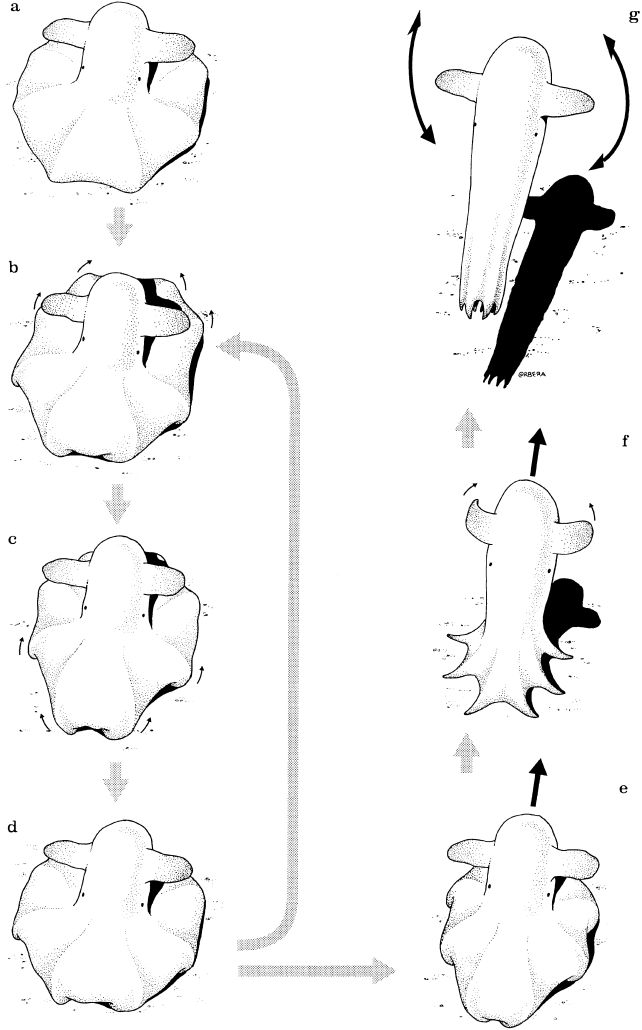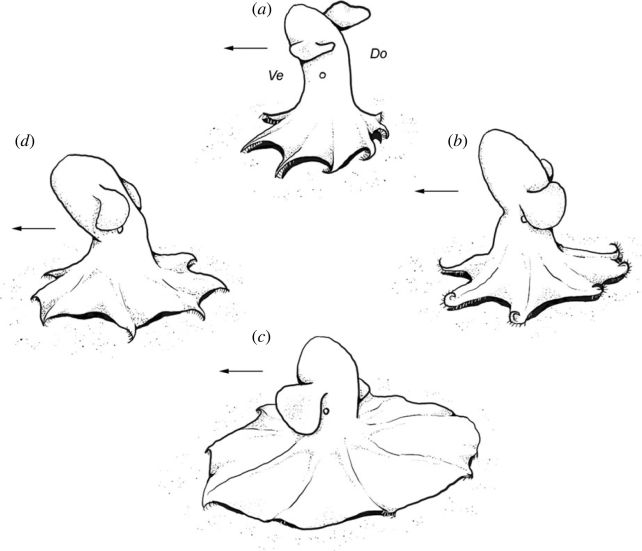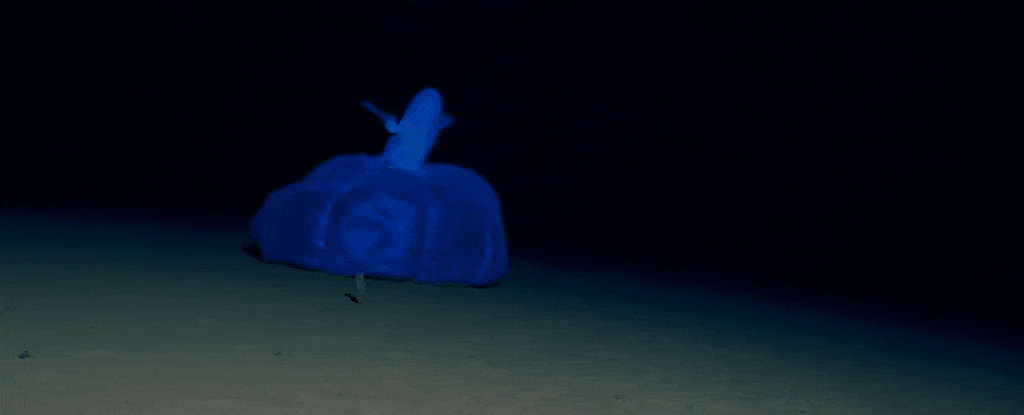The abyssal depths of the world's oceans are a place of eerie mystery. The creatures that lurk therein live strange lives, vastly different from those on the temperate surface.
An encounter with one such creature was documented last year. Deep under the Pacific Ocean, marine scientists recorded a sight rarely seen by humans: an octopus billowy-bouncing across the seafloor at a depth of 4,800 meters (15,750 feet) – smack bang in the abyssal zone.
The expedition was the Trans-Pacific Transit, and researchers from the University of Western Australia aboard the vessel Dagon used submerged laboratories to peek at the life that thrives in the freezing cold temperatures, crushing pressures, and permanent darkness far below the ocean waves.
Their video shows an octopus known as a big-eye jellyhead (Cirrothauma cf. magna).

We don't know much about this octopus; where it lives is extremely difficult for humans to explore, so we don't exactly get to observe it in its natural abyssopelagic habitat on a regular basis.
A 1997 study offers some clues about the strange boinging. It describes observations of cirrate octopuses bouncing along the seafloor in the same fashion, and refers to it as a form of locomotion.
There's a diagram, and it's delightful.

But there could be a bit more to it. We've also seen related cirrate octopuses hopping along the ocean floor in a similar fashion at shallower depths, which could be another clue about what the heck this bouncy lil ocky is doing.
In a paper published last year in Proceedings of the Royal Society B: Biological Sciences, marine scientist Alexey Golikov of the GEOMAR Helmholtz Centre for Ocean Research in Germany and his colleagues described a bouncing foraging behavior observed in the cirrate octopus known as the big-finned jellyhead (Cirroteuthis muelleri).
There's another diagram:

This octopus, the researchers described, performs the same sequence as observed in the recent video of the big-eye jellyhead.
It bounces itself up off the seafloor; at the apex of each bounce, it spreads its arms, ballooning out the membrane between them to land on the seafloor. During this touchdown, the octopus captures any prey that it managed to encompass, before bouncing up again and repeating the sequence.
The observations, obtained between 2020 and 2022, marked the first time this feeding behavior had been seen and documented in cirrate octopuses.
There is so much we don't know about life in Earth's oceans. But one thing is becoming abundantly clear: even at the deepest, darkest, coldest depths of the ocean, incredible ecosystems are finding a way to thrive.
Life finds a way – even it's a strangely boinging balloony one.
